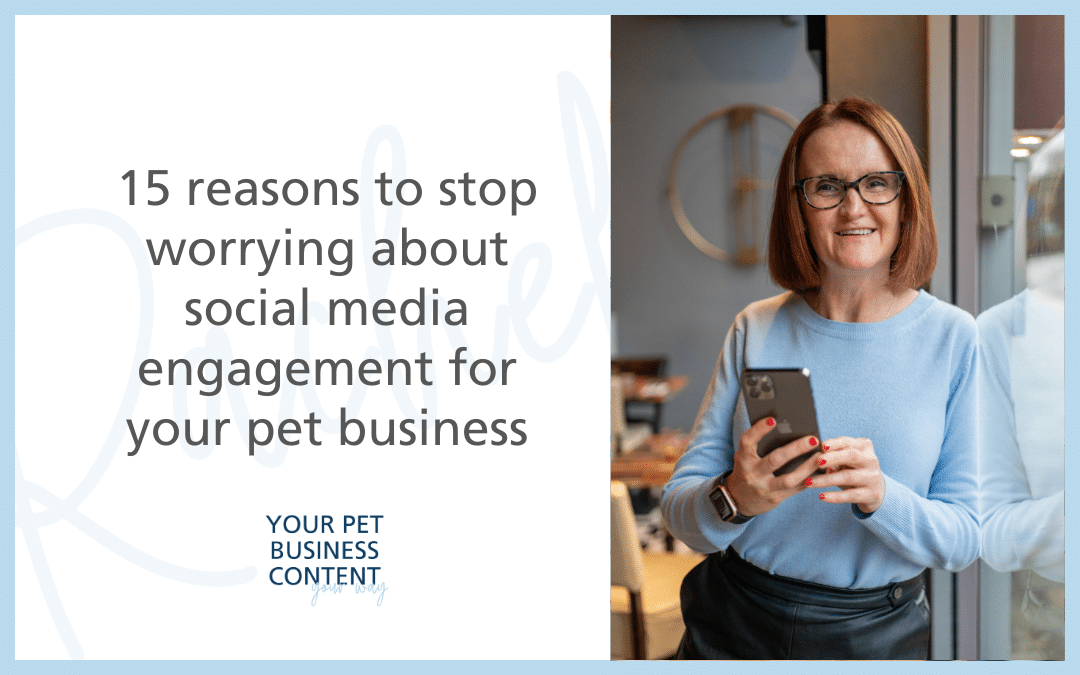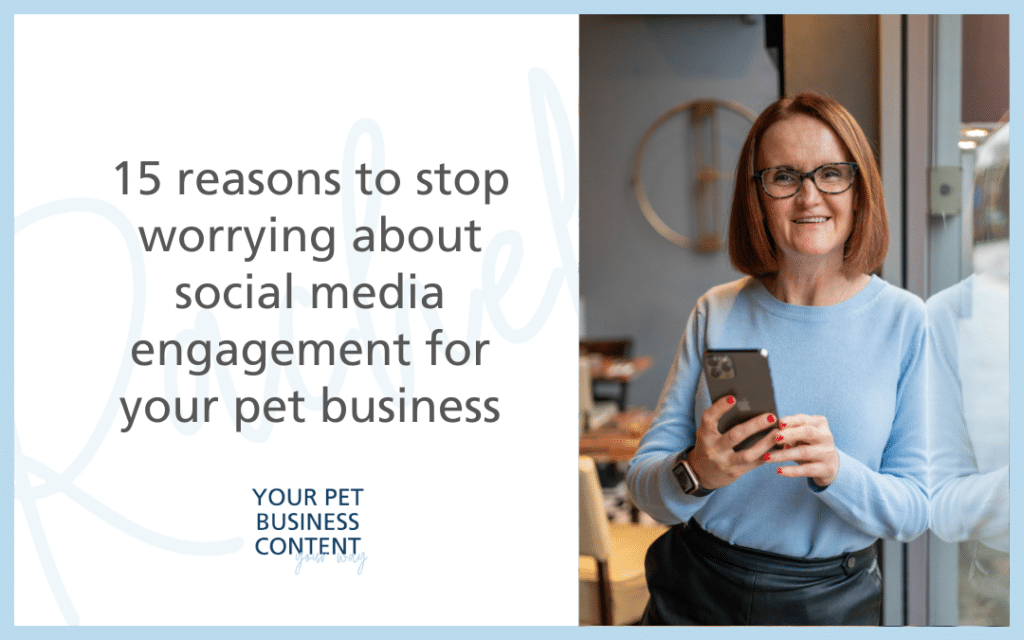You know writing content is really important for your pet business.
But when you sit down to write it your mind goes blank.
What can you write about? Are you going to look silly? Who is going to read it? Why would anyone care?
These are the questions that might go through your mind and I get it – because I’ve been there myself.
So today I’m sharing what I’ve learned plus some easy ways to generate content ideas.
1. The hardest thing to do is get started
Back in 2014 when I started using a blog on my journalism site, my SEO guy Malcolm told me I needed to start blogging.
I hated doing it – it made me cringe.I felt like people would be reading it and laughing at me.
Eventually I overcame my fear and a few years later actually started a blog. Yes, at the age of 41, I became a blogger.
It was the best thing I have ever done. It led to me meeting loads of crazy pet people who are now friends, I wrote a book on how to get publicity and now I have this blog too.
But despite having written thousands of stories and hundreds of blogs, sometimes I do sit staring at a blank screen.
Or I find myself doing endless other tasks, mostly cleaning, eating the contents of the fridge and faffing around with Patch instead of my work!
What does work for me is taking myself away to a cafe or co-working space, turning off my phone and notifications on my laptop and just getting on with it.
Simple advice I know, but give it a try and you’ll find you can soon rattle through it.
2. Ideas come when you least expect them
Content ideas are everywhere. If you’re a dog walker for example, you might be out on a walk and get chatting about a new case of Alabama Rot in your area.
That is a content idea. You’re creating something incredibly valuable for your audience and potentially saving the lives of other pets.
You can collaborate with a vet for expert advice on what owners need to look out for or use the excellent resources on www.alabamarot.co.uk or the Vets4Pets website.
You can talk about it in a blog post, on social media, in a newsletter and send it out to your e mail list and it’s something that can be created fairly quickly too.
A piece of helpful, educational content like this reassures your existing clients that you are the best person to be caring for their dog, helps you reach new clients and positions you as an expert.
So always be on the lookout for ideas.
Think about the kind of things you chat to your doggy friends about or your pals in the pub – these are called ‘talkers’ and make for interesting, sharable content.
3. Think about the questions people ask you the most
When you tell people what you do, is there a question you’re asked over and over again?
For Sarah Beckley Jones who runs www.myanxiousdog.co.uk, the question she gets asked the most is ‘why the colour yellow?’
Sarah supplies yellow leads, collars, harnesses and other accessories for people with nervous dogs to put on their pets so other owners know not to let their dogs approach them.
So creating content on the significance of the colour yellow and where the idea originated from means she can answer that question and raise awareness of the campaign too.
I recently did a post on my blog about doggy massage. My first dog, Daisy, had massages as she had arthritis and a vet recommended the treatment.
She was treated by Charlotte Highland (you can read the post here if you’d like to find out more) so I’m going to use her as an example.
The kind of questions she would be asked would be:
Why does a dog need to have a massage?
Can massage help a dog with arthritis?
Does massage help dogs who take part in agility?
How do you give your dog a massage?
What happens during a doggy massage session?
Can you see the benefit of creating content around questions that you might be asked over and over again?
When you get a call or e mail enquiry, you can direct the potential customer to the content to help them make a decision.
And it means people landing on your website or social media page have the answers they are looking for at their fingertips.
4. Think about what people will put into search engine to find you
Similar to what people ask you in real life, finding out what people are putting in to search engines to find you is another way to spark content ideas.
Take a look in your Google Analytics or on your Google Search Console and see what queries you’re ranking for.
The queries are the words people put into Google that lead them to your website.
It can be surprising. On my journalist site, I rank highest for my name (phew) then second is ‘rescue alpacas for sale uk’ which is from a story I did a couple of years ago.
I also rank for people I’ve written about, then ‘freelance copywriter’, ‘freelance journalist’ and my fave, ‘dog journalist.’

So have a look around your Google account and create content around the queries you want to rank for.
If you’re stuck for ideas, ask friends or clients what they would put in a search engine if they were looking to find you.
Imagine you’re the customer – what do they want to find and what’s the problem they’re looking for you to solve?
5. Take people behind the scenes and show them what you do in your business
People are really nosy and they love to see what goes on behind the scenes in a business.
It makes them feel closer to you and your brand and increases customer loyalty.
If you have a product based business, then show your workshop, your machinery, items being created and the process you go through.
So if you’re making dog walking bags, you could show photos of the cut-out patterns you use or a video of you at the sewing machine.
Maybe you’re considering different fabrics? Take a photo of each pattern and turn it into a blog post which you can then share on social media and get your audience involved.
With a service business, you could write a Day In The Life post about what a typical day is in your business with photos of you at work.
Or maybe take your audience out on a dog walk or training session with a video showing snippets of what it’s like.
For those potential customers who might be sitting on the fence and considering making a purchase or working with you, taking them behind the scenes can be just what they need.
Conclusion
I hope this has taken some of the overwhelm away when it comes to creating content for your pet business.
Ideas are everywhere and once you get into the habit of writing regularly, it does get easier I promise.
If you found this helpful, you might like to read:
Why content is important for your pet business
Why creating content can be better than PR for your pet business









